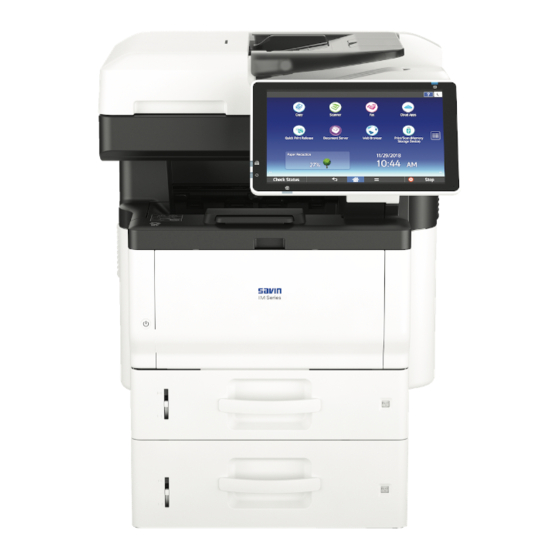
Table of Contents
Advertisement
Quick Links
User Guide
Selected Version
Getting Started
Copy
Fax
Print
Scan
Document Server
Web Image Monitor
Adding Paper and Toner
Troubleshooting
Information for This Machine
For information not found in this manual,
see the online manuals available on our
web site (https://www.ricoh.com/) or via the
control panel.
For safe and correct use, be sure to read Safety Information before
using the machine.
Advertisement
Table of Contents














Need help?
Do you have a question about the IM430 Series and is the answer not in the manual?
Questions and answers
i just changed my toner in my savin 350f printer but my printer is printing really dark